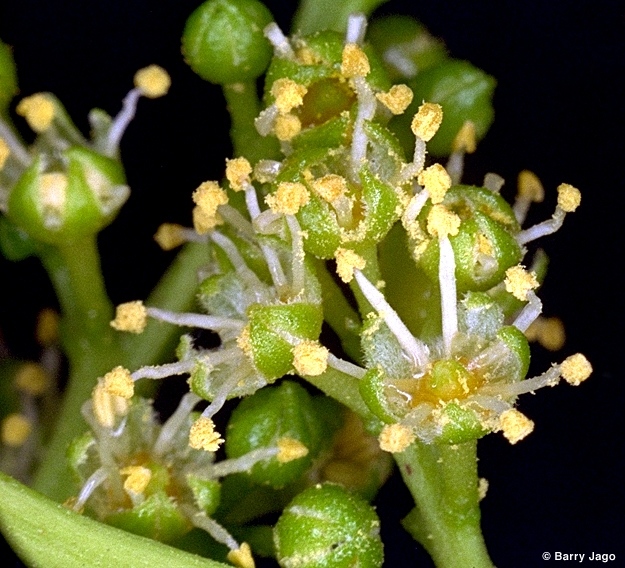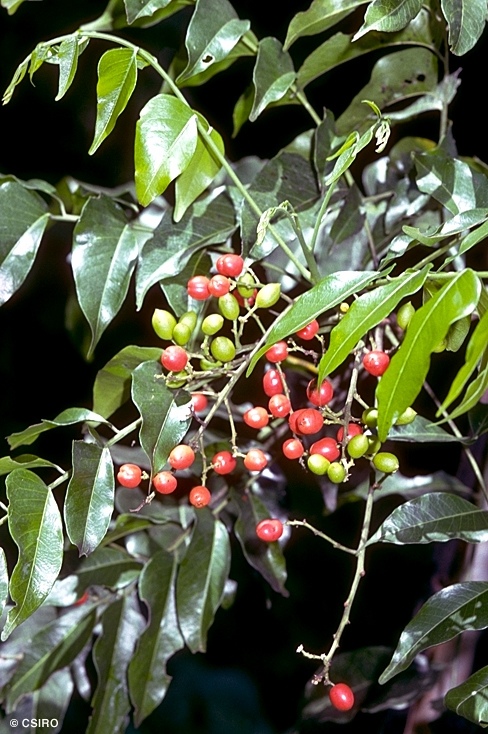Australian Tropical Rainforest Plants - Online edition
Ganophyllum falcatum Blume







Blume, C.L. von (1850) Museum Botanicum Lugduno-Batavum 1 : 230. Type: In sylvis litoralibus Novae Guineae.
Scaly Bark Ash; Ash, Scaly; Ash, Scaly-bark; Daintree Hickory; Honeywood; Scaly Ash
Bark usually shed in large flakes, each flake about 15 x 15 cm.
Leaflet blades about 3-9.5 x 1.5-5 cm, oblique at the base. Pits and/or scattered silvery scales visible on the upper surface of the leaflet blades. Leaflet stalks channelled on the upper surface. Lateral veins forming loops inside the blade margin. Compound leaf rhachis channelled or shallowly channelled on the upper surface and angled on either side.
Fruits ovoid, about 10-15 x 6-13 mm. Cotyledons green, sometimes folded.
Cotyledons linear, about 15-20 mm long, fleshy, venation absent or difficult to see. Petiole and rhachis of first pair of leaves narrowly winged. At the tenth leaf stage: leaflet blades, unequal-sided at the base, margin crenate, teeth 1 or 2 on each side of the leaflet blade, sometimes absent by 10th leaf stage, but present at younger stages, glabrous; petiole and rhachis of compound leaf channelled or winged. Seed germination time 9 to 23 days.
The timber of this species has been reported as being toxic to termites. Fruit eaten by Cassowaries and Fruit Pigeons. Cooper & Cooper (1994).
Now frequently used in horticulture for the shade provided by the spreading crown. Ripe fruits are red and are sought after by many bird species.
Produces a useful general purpose timber.
Wood specific gravity 0.86. Cause et al. (1989).





